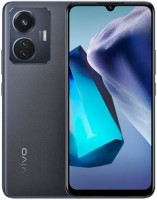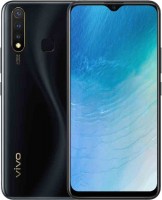Mobile Phones Vivo series X (mid-level+)
Vivo X
With the help of X-series smartphones, the Chinese brand Vivo planned to win back its piece of the pie in the near-top smartphone market. Yes, OnePlus and Xiaomi, we are looking at you now. But something went wrong and most of the representatives of this glorious line never made it to our region. In 2020, the company announced a soft reboot of the X series, presenting the new X50 to the public, as well as a couple of its modifications, among which the X50 Pro models stood out.
 |
When designing the X devices, the manufacturer decided to focus on the camera. For example, the X50 Pro is equipped with a quad camera with an unusual external gimbal for image stabilization during video shooting, as well as a periscope-type telephoto lens with 10x zoom. Plus, the device perfectly shoots in low light conditions. Typically, cameras of this level are installed only in elite camera phones with a price tag of thousands of dollars, such as Huawei P40 Pro and Samsung Galaxy S20 Ultra.
At the same time, the X-series smartphones are all the rage (5G, HDR displays, powerful charging, in-screen scanner, etc.), but are inferior to the leaders in terms of computing capabilities. Instead of top-end processors, well-tested chips a la Snapdragon 765G are most often used, and the amount of RAM usually does not exceed 8 GB. As numerous surveys show, for 95% of people such a set is enough for everyday use and for multimedia entertainment. This policy has favorably affected the final cost of Vivo X smartphones, thanks to which they are able to successfully compete with the best camera phones on the market.



